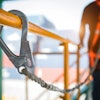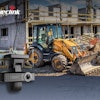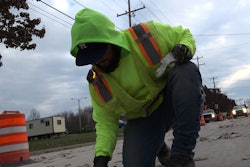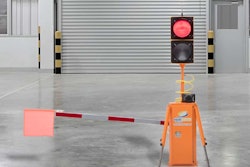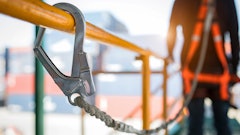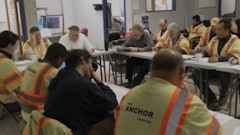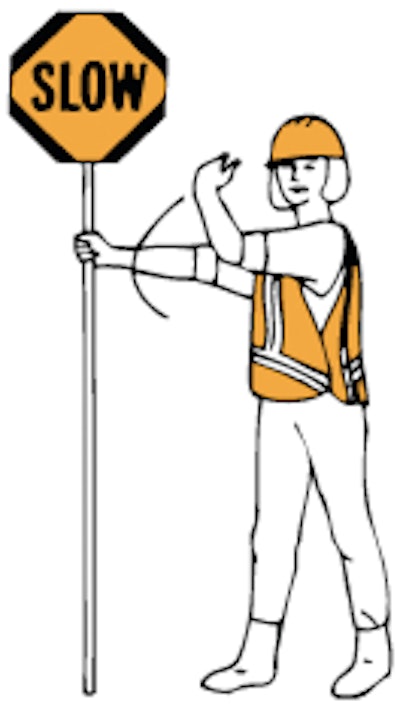
To tell traffic to proceed the flagger shall face traffic with the SLOW sign paddle held in a stationary position with the arm extended horizontally away from the body. Motion in an upward curling motion with the free hand.
One of the most dangerous jobs related to concrete work is that of the flagger. A flagger must not only concentrate on effectively moving traffic through an obstructed roadway, but simultaneously pay attention to the actions of his colleagues and on-site equipment.
Following are safety guidelines to ensure safe control of traffic and safe working conditions for flagmen.
- Flag use should be limited to emergency situations, and low-speed and/or low-volume locations, that can best be controlled by a single flagger.
- Flags used for signaling shall be a minimum of 24 inches square made of high grade red material and securely fastened to a staff at least 3 feet long.
- The free edges should be weighted so that the flag will hang vertically, even in heavy winds.
- Night flags are required to be retroreflective red.
- Flagger stations must be located far enough ahead of the work space, so that approaching traffic has sufficient time to stop before entering the work zone. This distance should be related to variables like approach speed, friction factors, pavement type and road conditions.
- The flagman should stand either on the shoulder adjacent to the traffic being controlled, or in the barricaded lane. At a "spot" construction site, a position may have to be taken on the shoulder opposite the barricaded section to operate effectively.
- A flagman should never stand in the path of oncoming traffic to give direction but may move into the lane after the traffic has stopped, if the flagman needs to communicate with the driver or must be visible to other traffic.
- A flagman working in nighttime conditions should wear a vest, shirt or jacket made of retroreflective orange, yellow, white, silver, strong yellow or green material visible at a minimum of 1,000 feet.
- A flagman working in day time conditions should wear a vest, shirt or jacket made of bright or fluorescent orange, yellow or strong green material.


